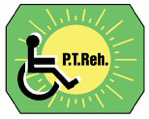


|
Current issue
Archive
Manuscripts accepted
About the journal
Editorial board
Reviewers
Abstracting and indexing
Contact
Instructions for authors
Publication charge
Ethical standards and procedures
Editorial System
Submit your Manuscript
|
2/2025
vol. 39 abstract:
Review article
Effect of Remote Myofascial Intervention on Musculoskeletal Health and Functional Performance: A Systematic Review
Behrouz Jafari
1
,
Homan Minoojejad
1
,
Rahman Sheikhhoseini
2
,
Reza Rajabi
3
Adv Rehab. 2025. 39(2): 77-93
Online publish date: 2025/04/15
View
full text
Get citation
ENW EndNote
BIB JabRef, Mendeley
RIS Papers, Reference Manager, RefWorks, Zotero
AMA
APA
Chicago
Harvard
MLA
Vancouver
Introduction:
Fascia plays a crucial role in maintaining bodily function and life. It transmits mechanical stresses faster than muscles. This paper reviews recent randomized controlled trials (RCTs) concerning range of motion (ROM), pain and function with the aim of evaluating the effectiveness of remote myofascial intervention (RMI). Material and methods: A systematic search was conducted in PubMed, Google Scholar, Scopus, and Web of Science until September 2024. Studies were screened using PRISMA guidelines. Data extracted included sample size, participant age, intervention type, treatment area, outcome measure and results. Results: Nineteen RCTs and cross-over trials met the inclusion criteria. Study quality was assessed using PEDro scores. Intervention durations ranged from 30 seconds to four minutes across one to three sets, with evaluations conducted from pre-test to up to four weeks post-test. Variables measured included ROM, Pain Pressure Threshold (PPT), tissue elasticity, and interceptive sensitivity. The review was registered in PROSPERO (CRD42024589547). Conclusions: RMI appears effective for improving flexibility and pain, but optimal implementation remains uncertain. Most studies highlight the role of viscoelastic properties and neural receptor stimulation in force transmission through myofascial chains; however, their relative contributions remain unclear. Further research is needed to assess the impact of RMI on musculoskeletal conditions, exploring a broader range of outcome variables. keywords:
myofascial release therapy, physical functional performance, range of motion, systematic review |
    |